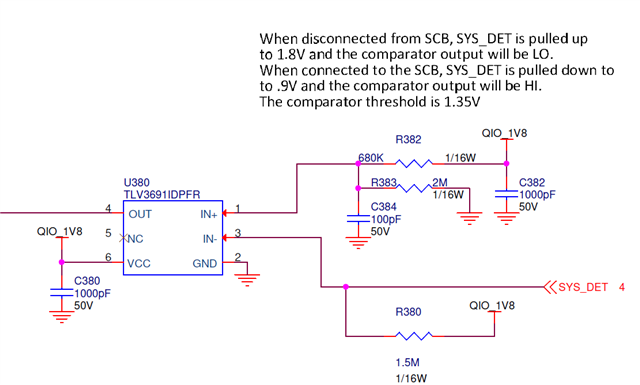Please disregard the previous post on this issue. I pasted in the incorrect circuit. This post has the correct circuit.
I have a simple circuit where we are normally pulling the - input to supply. (1.8V) through a 1.5Meg resistor. The circuit is used to detect the connection of a battery module.
The - input of the comparator pulls enough current to bring the input voltage down to 1.65V. The input bias current should only pull 20pA so there should only be a minimal voltage drop.
The device is rail to rail input so I don't know what is causing the excessive current draw. Any light you can shed on this is greatly appreciated.
Below is the circuit schematic.


